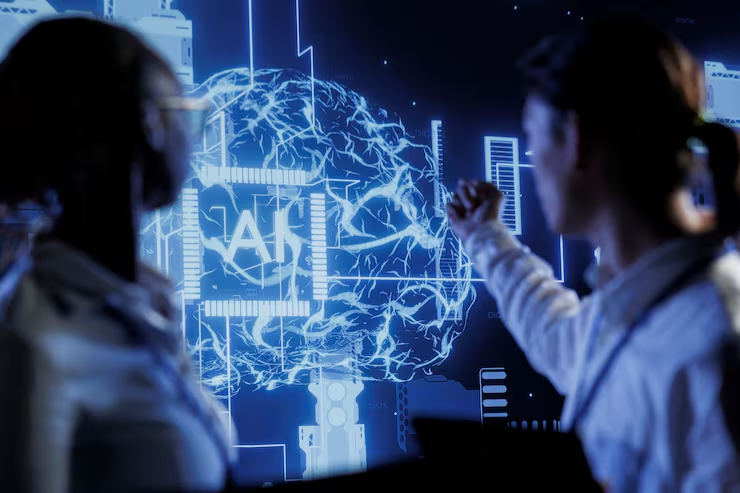Most people tend to think of artificial intelligence as something flashy robots, autonomous vehicles, or algorithms capable of defeating chess masters. Behind all of that glitz, there is a much more straightforward concept: knowledge. More specifically, how that knowledge is organized.
One of the earliest, and still surprisingly powerful, semantic nets is one method. to help machines understand the world by using something called a semantic network. It might not be the most hyped concept in AI today, but if you want to build systems that can reason, not just memorize, semantic nets in AI are worth knowing.
Let’s break it down together.

Semantic Network in AI
In artificial intelligence, a semantic network, also known as a semantic net, is a method of representing knowledge using nodes and relationships. A semantic net in AI is a simple way to help computers understand how different ideas or things are connected. Think of it like a web of knowledge. Each idea (like “bird” or “animal”) is a point, and lines between them show how they’re related; for example, “a bird is an animal” or “a bird can fly.”
This method helps AI organize facts and make sense of them, not just as separate pieces, but as part of a bigger picture. It’s useful when you want a system to not just store information but also reason with it, a bit like how we connect ideas in our own minds.
- Nodes represent concepts or objects (like “dog,” “animal,” and “barks”).
- Edges (links) represent relationships between those concepts (like “is-a,” “has,” or “can”)
What Exactly Is a Semantic Network?
Imagine someone asks you, “What is a cat?”
You may answer:
- A cat is an animal.
- It has fur.
- It meows.
These facts aren’t just randomly floating around in your head. They have a connection. In artificial intelligence, a semantic net does just that it arranges knowledge by establishing connections between ideas.
So in this example:
- Cat” is connected to “Animal” by an “is-a” relationship.
- It’s connected to “fur” through a “has” link.
- It’s connected to “meow” through a “can” link.
That’s a semantic net in action. It’s just a map of concepts, connected by meaningful relationships.
Why Does This Matter in AI?
Here’s the thing. While contemporary AI (such as deep learning) excels at identifying patterns, it frequently finds it difficult to explain why those patterns exist or how disparate pieces of information relate to one another. But if you want an AI to explain something, or make logical inferences, or hold a meaningful conversation, it needs structural semantic nets to provide that structure.
They let machines do things like
- Understand hierarchy. A robin is a bird, and birds are animals.
- Inherit properties. If birds can fly, and a robin is a bird, then robins can probably fly.
- Reason based on context (“If John is Mary’s brother, and Mary is Susan’s mom, how is John related to Susan?”)
That’s hard to do with just numbers and training data, and that’s where semantic nets shine.
How Does a Semantic Network Work?
Let’s break it apart:
1. Nodes
These are the “things” in your network objects, concepts, and categories. Examples: dog, animal, vehicle, food, happiness.
2. Edges (Links)
These are the relationships between nodes. Common types include:
- is-a (for categories)
- has (for properties or parts)
- can (for actions or behaviors)
- part-of (for hierarchies)
3. Inheritance
This is a superpower of semantic networks. Let’s say:
- A robin is a bird
- Birds lay eggs
From this, a system can infer:
Now, without directly saying it, we know that whales breathe air. That’s inheritance and it keeps knowledge clean, reusable, and logical.
Let’s Build a Simple Semantic Net Together
Concepts:
- Animal
- Mammal
- Bird
Relationships:
- Cat → is-a → Mammal
- Mammal → is-a → A
- Bird → is-a → Animal
Properties:
- Mammals → have → Fur
- Birds → have → Feather
Now ask yourself: Can a dog move?
We never wrote that directly. But the net tells us:
- Dog → is-a → Mammal
- Mammal → is-a → Animal
- Animal → can → Move
So yes, dogs can move. That’s inference and it’s possible thanks to how semantic nets organize facts.

Semantic Networks in the Real World
You might be surprised to learn that semantic nets in AI are used all the time even in high-tech products you use every day.
1. Google’s Knowledge Graph
When you search “When was Einstein born?”, Google doesn’t just match text. It uses a semantic net to connect “Einstein” to “person,” → “birth date” → “1879.”
2. Voice Assistants
When you say “Call my brother,” your phone has to understand the relationship between “you” and “your brother.” That’s not keyword recognition that’s semantic reasoning.
3. Learning Platforms
Applications like Duolingo utilize a semantic net in AI to connect grammar rules, vocabulary, and topics to tailor learning paths.
4. Medical AI
Systems that help doctors diagnose diseases use semantic networks to link symptoms to conditions to treatments, allowing logical steps in diagnosis.
Strengths of Semantic Networks
- Easy to understand even for non-programmers
- Great for logical inference and reasoning
- Highly structured and organized
- Transparent you can see how facts are connected
Limitations to Watch Out For
- Not designed for fuzzy data or probabilities
- Doesn’t handle ambiguity or uncertainty well
- Can grow complex and hard to manage without tools
- Not suitable for raw image/audio processing (where deep learning shines)
When Should You Use a Semantic Net?
Here are some cases where semantic networks make sense:
- You’re building a knowledge base or expert system
- You need your AI to explain why it reached a decision
- You’re modeling relationships, like social networks, family trees, or product hierarchies
- You want to introduce structured logic into a chatbot or voice assistant.
Why Every AI Learner Should Know Semantic Nets
Even though deep learning, data science, and neural networks are dominating headlines today, the importance of foundational tools like semantic networks hasn’t faded. In fact, in certain areas of AI, especially those that require logic, explanation, or structured understanding, semantic nets in AI are not just useful; they’re essential.
Most modern AI systems are excellent at finding patterns in data, like detecting cats in images or predicting what movie you’ll want to watch next. But here’s the catch: they often do this without any real understanding of what a cat or a movie even is. They operate in numbers and probabilities. Think of a semantic net in AI as the step between raw data and real-world meaning.
Computer scientists brainstorm ways to use AI cognitive computing to extract usable information from complex data. Data center employees implement artificial intelligence to process massive datasets
Conclusion
Why Do Every AI Learner Know Semantic Nets?
Even though deep learning is dominating headlines, semantic nets in AIhaven’t lost their value. If you’re serious about AI, you’ll eventually need a way to represent and reason about facts—not just patterns.
Semantic nets in AI offer a bridge between data and logic. They help machines “think” more like humans, not in numbers, but in relationships.
So whether you’re a student, a developer, or just curious about AI, try building your own semantic net in AI. Just start with something simple: a daily routine, your favorite television show’s character tree, or a food web. You will see how quick and easy it is when you get started.